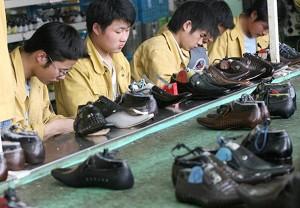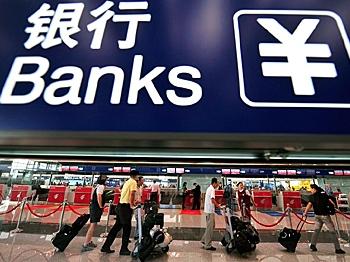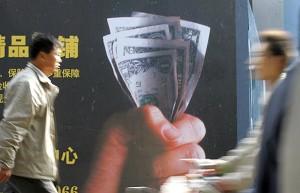China’s regional development policies have increased dramatically in recent years. In 1999, twenty years after China started its economic reform, the gap in economic development and people’s income in China’s east and west reached an unprecedented level. To restore the imbalance, the then Party chief, Jiang Zemin, announced Beijing’s policy to speed up the economic development in the western regions of China, which was called the “Develop the West” Campaign.
In 2003, when that Campaign had yet to produce tangible results Hu Jintao took over the post of the Party chief, and Prime Minister Wen Jiabao made three trips to the nation’s northeastern region, promoting Beijing’s new Campaign of “Revitalizing the Northeast.” The northeastern region of China had played an important role in the nation’s modern history of economic development. The region’s industrial base started from the period of Japanese occupation. During World War II, Japanese built some major industries in order to plunder China of its coal and iron resources and maintain its all-out war against China.
After the Chinese communists took power in 1949, the nation’s first five-year plan assigned nearly one third of the major Russian-aided projects to the northeastern region, which is close to China’s major ally, the Soviet Union. But after China began to implement its policy of economic reform in the late 1970s, the large state-owned enterprises in the region, turned into economic burdens. As a result the northeast of China had the slowest economic growth, highest unemployment, and worst social order.
While people were still confused about which was more important—the plan to develop the west or the one to revitalize the northeast—the leaders of China' central government set about inspecting the nation’s central area and rolled out the next Campaign of “The Rise of the Central Areas.” The central areas were fully justified in asking for assistance for their economic development because these areas, when compared with other areas in China, had been playing a diminished role in China’s national economy since the communist nation was founded. They have neither the transport and trade advantages as the coastal areas, nor the special treatment by the central government as enjoyed by the western regions because of political reasons. They were ignored in the development strategy in the coastal areas when China’s reform and opening up started, and were again overlooked in Beijing’s subsequent plan to develop the west. The central areas’ share of China’s GDP had been sliding down.
Because of Beijing government’s introduction of policies for the west, northeast, and central areas, the coastal areas of the east that have experienced rapid development since the 1980s began to feel neglected. Through various channels they exerted pressures on the central government, requesting it to pay more attention to the irreplaceable role of the coastal areas in China’s integration into the globalization of the world economy and to observe economic laws by refraining from artificially slowing down the growth of the eastern regions. Under this circumstance, Hu Jintao, Wu Bangguo, and Wen Jiabao made separate trips to China’s eastern provinces, and encouraged their continued lead in economic development. At a special meeting last April, the central government decided to put in place an experimental, yet comprehensive reform in the new district of Binhai in China’s eastern coastal city of Tianjin, as a part of the policy to allow coastal areas to continue their rapid development so as to drive the national economy.
So, within seven years Beijing rolled out four regional “development strategies”: the development of the west, the revitalization of the northeast, the rise of the central areas, and the leading role of the coastal areas. Together, these policies have covered all of China.
These so-called regional strategies are overlapping in time and identical in approaches. They work in two ways: one is the application of a favorable tax policy to designated industries and enterprises; another is the provision of more funds—either through direct disbursement from the central government or through loans on favorable terms from state-controlled banks.
Seven years have passed since the start of the “Develop the West” Campaign, the earliest among the four campaigns. According to official statistics in the past seven years, though the central government has infused large amounts of funds into the west through direct disbursement from central treasury or development of a few large projects, the gap in income between the east and the west, instead of decreasing, has widened. Understandably, a regional policy needs time to produce results; so it may be too early to come up with a fair assessment of these strategies. That however, does not stop us from making a forecast on the future prospects based on plain logic and past experience.
The Chinese communist regime implemented several regional development policies through providing favorable tax policies and an infusion of funds to achieve a balanced national economic development; its intention was to push the development of certain areas to speed up others; and it wanted to bridge the income gap between residents of different regions. However the simultaneous introductions of these development policies covering the entire nation defeat logic, as it amounts to having no regional policies at all.
Preferential treatment to all regions is tantamount to no preferential treatment at all. Funds from central treasury, though helpful in boosting growth in a specific area, are limited in a given period. Promises to provide financial support to all areas are the same as issuing bad checks to all. In the end, there will be no changes in patterns of regional development and income.
Since the all-round approach and the notion of regional development policy are contradicting one another, why would the Chinese communist regime still adopt regional development policies all around the nation? What regional development policies had the Chinese government taken before? What experiences and lessons did the past regional policies teach us? I continue this discussion in Part 2 of my next commentary.


